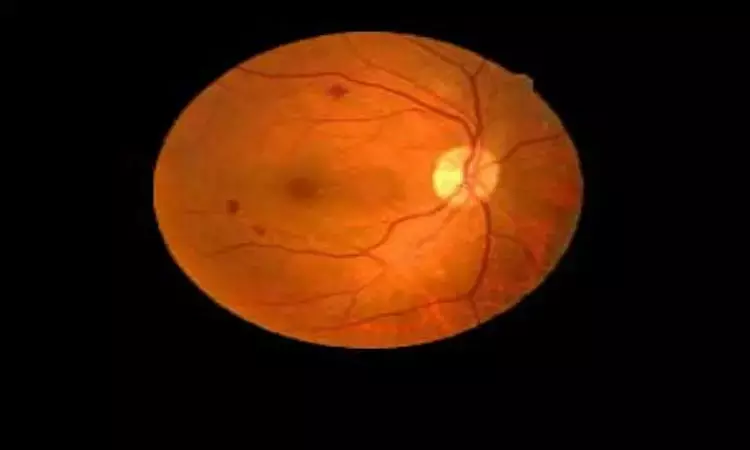- Home
- Medical news & Guidelines
- Anesthesiology
- Cardiology and CTVS
- Critical Care
- Dentistry
- Dermatology
- Diabetes and Endocrinology
- ENT
- Gastroenterology
- Medicine
- Nephrology
- Neurology
- Obstretics-Gynaecology
- Oncology
- Ophthalmology
- Orthopaedics
- Pediatrics-Neonatology
- Psychiatry
- Pulmonology
- Radiology
- Surgery
- Urology
- Laboratory Medicine
- Diet
- Nursing
- Paramedical
- Physiotherapy
- Health news
- Fact Check
- Bone Health Fact Check
- Brain Health Fact Check
- Cancer Related Fact Check
- Child Care Fact Check
- Dental and oral health fact check
- Diabetes and metabolic health fact check
- Diet and Nutrition Fact Check
- Eye and ENT Care Fact Check
- Fitness fact check
- Gut health fact check
- Heart health fact check
- Kidney health fact check
- Medical education fact check
- Men's health fact check
- Respiratory fact check
- Skin and hair care fact check
- Vaccine and Immunization fact check
- Women's health fact check
- AYUSH
- State News
- Andaman and Nicobar Islands
- Andhra Pradesh
- Arunachal Pradesh
- Assam
- Bihar
- Chandigarh
- Chattisgarh
- Dadra and Nagar Haveli
- Daman and Diu
- Delhi
- Goa
- Gujarat
- Haryana
- Himachal Pradesh
- Jammu & Kashmir
- Jharkhand
- Karnataka
- Kerala
- Ladakh
- Lakshadweep
- Madhya Pradesh
- Maharashtra
- Manipur
- Meghalaya
- Mizoram
- Nagaland
- Odisha
- Puducherry
- Punjab
- Rajasthan
- Sikkim
- Tamil Nadu
- Telangana
- Tripura
- Uttar Pradesh
- Uttrakhand
- West Bengal
- Medical Education
- Industry
DEX implant predicts fluocinolone acetonide intravitreal implant outcome in diabetic macular edema patients: Study

Italy: A recent study reported that a positive response to the dexamethasone (DEX) implant may be predictive of positive responses to the fluocinolone acetonide (FAc) implant for diabetic macular edema (DME). The study was published in the Nature journal Eye on 21 January 2021.
Maria Vittoria Cicinelli, School of Medicine, Vita-Salute San Raffaele University, Milan, Italy, and colleagues conducted the Retrospective cohort study with an objective to determine if the visual and anatomic response to the first DEX implant predicts the 2-month clinical outcome after shifting to FAc implant in DME patients.
The study included pseudophakic patients with previously treated DME who underwent one or more DEX injections before FAc. Functional and morphologic response to DEX were defined based on the best-corrected visual acuity (BCVA) and central macular thickness (CMT) changes after the first DEX, respectively.
Steroid-response was defined as intraocular pressure (IOP) elevation ≥5 mmHg or IOP > 21 mmHg after any previous DEX exposure. The researchers performed pairwise comparisons for BCVA, CMT, and IOP after FAc with linear mixed models and a repeated-measure design. Forty-four eyes of 33 patients were included in the study.
Key findings of the study include:
- Patients were shifted to FAc after a mean ± standard deviation of 4.6 ± 3.2 DEX injections. Overall, BCVA and CMT improved during the first 12 months after switching to FAc.
- Only eyes with a good morphologic response to DEX had a significant CMT reduction after FAc, while no significant relationship was found between BCVA improvement after DEX and after FAc.
- IOP elevation occurred in 9 eyes (20%) following DEX implant.
- These eyes carried a 20-fold increased risk of having an IOP rise after FAc, with a non-linear relationship between the IOP increase after DEX and the one after FAc.
To conclude, response to previous DEX may anticipate the morphologic response to subsequent FAc. Those having steroid-induced IOP elevation in eyes after DEX were at high risk of IOP increase after FAc.
"The visual response after FAc was not related to the visual response to previous steroids, this indicates that FAc may have a role also in patients refractory to DEX implant," they concluded.
Reference:
Cicinelli, M.V., Rosenblatt, A., Grosso, D. et al. The outcome of fluocinolone acetonide intravitreal implant is predicted by the response to dexamethasone implant in diabetic macular oedema. Eye 35, 3232–3242 (2021). https://doi.org/10.1038/s41433-020-01373-1
Dr Kamal Kant Kohli-MBBS, DTCD- a chest specialist with more than 30 years of practice and a flair for writing clinical articles, Dr Kamal Kant Kohli joined Medical Dialogues as a Chief Editor of Medical News. Besides writing articles, as an editor, he proofreads and verifies all the medical content published on Medical Dialogues including those coming from journals, studies,medical conferences,guidelines etc. Email: drkohli@medicaldialogues.in. Contact no. 011-43720751


